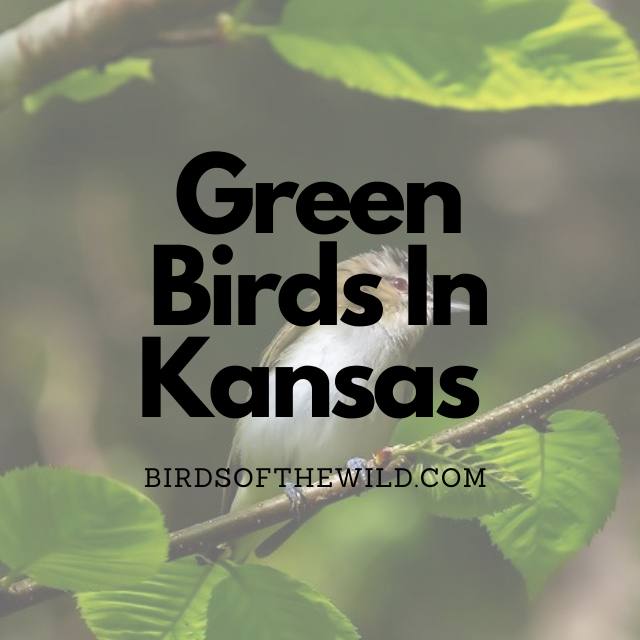Kansas is home to many different winged wildlife rocking a variety of distinctive feathers separating them from each other. In this article I’ll be going over 5 different green colored birds that consider Kansas so, far from the most exotic of colored birds but all of which are still worth looking out for on your next bird watching expedition.
- Red Eyed Vireo
- Ruby Throated Hummingbird
- Painted Bunting
- Orange Crowned Warbler
- Green Heron
5 Green Birds In Kansas
1. Red Eyed Vireo (Vireo Olivaceus)

- Size: 11 – 13cm
- Weight: 20 – 24 grams
- Wingspan: 23 – 25cm
Red eyed vireos are summer and spring residents within Kansas as they will typically be in the state when breeding.
These vireos are recognised by there green feathers from the head, wings and back, white feathers on their breast and the stand out red eye. The females look very similar to the males.
As for where you’ll often see these birds perching or flying around, it would include environments with large expanses of deciduous forest, particularly deciduous trees with large leaves, like maple trees for example.
Red eyed vireos tend to eat mostly insects like caterpillars, moths, beetles, wasps, bees, ants, bugs, flies, as well as the occasional fruit and berry.
Red eyed vireos tend to live for around 6 – 7 years, whilst the oldest recorded one died at 10 years and 2 months.
2. Ruby Throated Hummingbird (Archilochus Colubris)
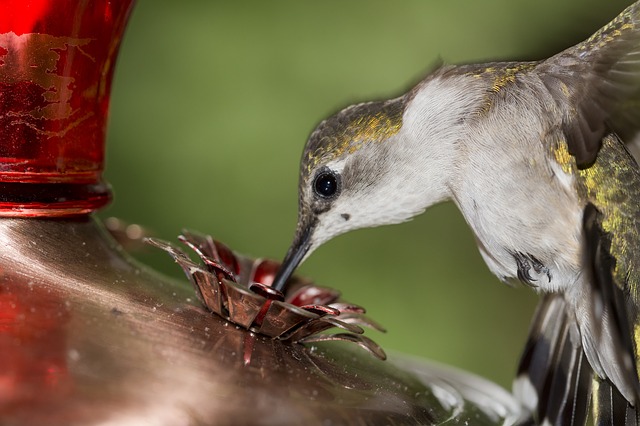
- Size: 7 – 9cm
- Weight: 2 – 6 grams
- Wingspan: 8 – 11cm
Ruby throated hummingbirds tend to breed around the eastern part of Kansas whilst they typically will be making their migratory passage from the central areas of the state.
A ruby throated hummingbird can be recognised by their plumage that is red, white and green. Their throat is the red part, its breast/stomach white in color and their wings and back an emerald green color. Females are mostly white and green in color.
As for what they eat, it ranges from small insects, fruits, sugar water from feeders, tree sap and of course the nectar produced by blooming flowers.
Ruby throated hummingbirds tend to stay near environments with flowerbeds as these birds have a very strong metabolism that requires them to feed multiple times per hour. Therefore, you can find them in fields, parks, backyards, and open clearings in forests.
As for how long these tiny little hummingbirds can live for, it’s known to be around 3 – 5 years on average with the longest recorded lifespan just short of 7 years.
3. Painted Bunting (Passerina Ciris)
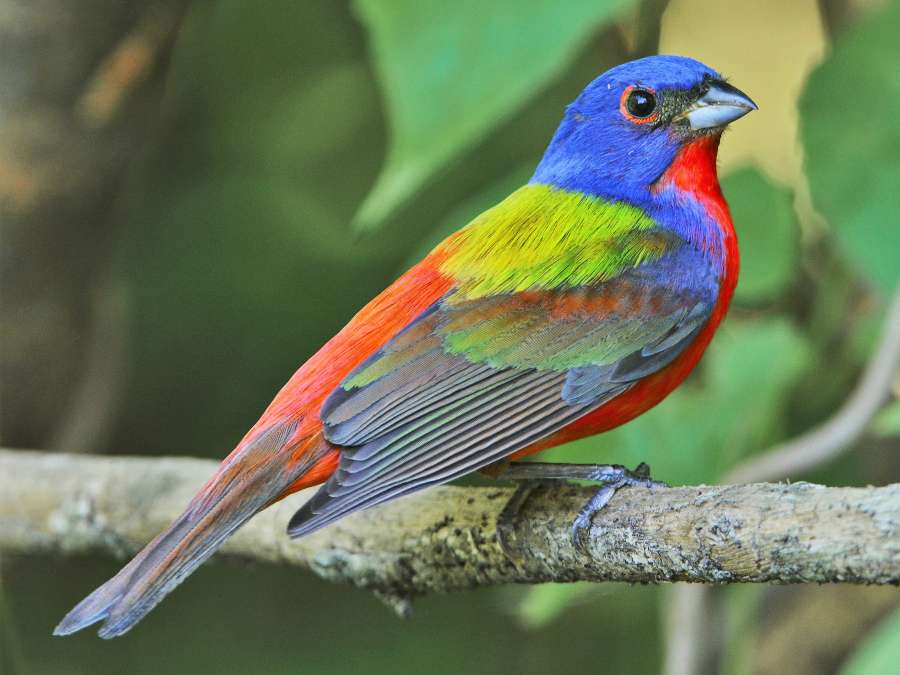
- Size: 12 – 13cm
- Weight: 13 – 19 grams
- Wingspan: 21 – 23cm
Painted buntings can be spotted in the southern and eastern part of Kansas when breeding. This typically will be around the spring and summer months.
Although painted buntings come in a variety of colors where their neck, breast and lower back is red, their head is blue whilst their upper back and wing is green. Females on the other hand are almost completely green.
You can find painted buntings around thickets, woodland edges with riparian thickets, shrubbery and brushy areas.
As for what they eat, it includes seeds, primarily those of grasses and weeds, berries, smaller fruits and a variety of smaller insects.
Most painted buntings can live for an average of 5 – 6 years whilst some have been known to live for 10+ years.
4. Orange Crowned Warbler (Vermivora Celata)
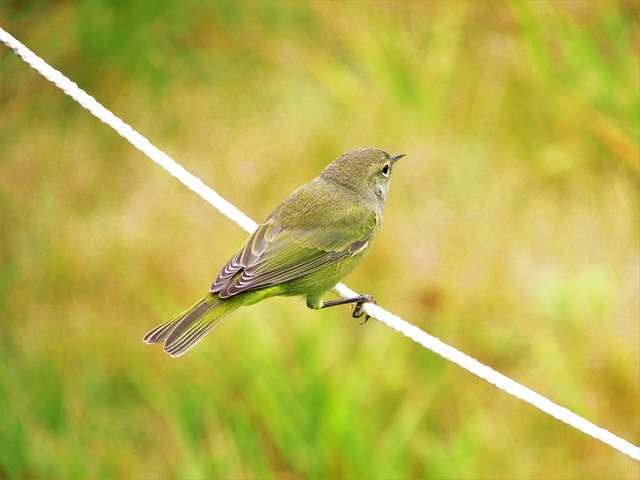
- Size: 12 – 13cm
- Weight: 8 – 10 grams
- Wingspan: 17 – 19cm
Orange crowned warblers can typically be spotted when they’re making their migratory journey through the state, which would typically be around the beginning and end of their breeding season.
These birds are mostly a light green color with the wings a slightly darker green. Females have overall color scheme for their plumage too.
Orange crowned warblers can be found around dense areas of deciduous shrubs, usually within or adjacent to forests.
These birds are known to eat insects throughout the summer months with the occasional berry, sip of nectar from flowers or tree sap.
Orange crowned warblers are also known to live for around 6 years in the wild on average.
5. Green Heron (Butorides Virescens)
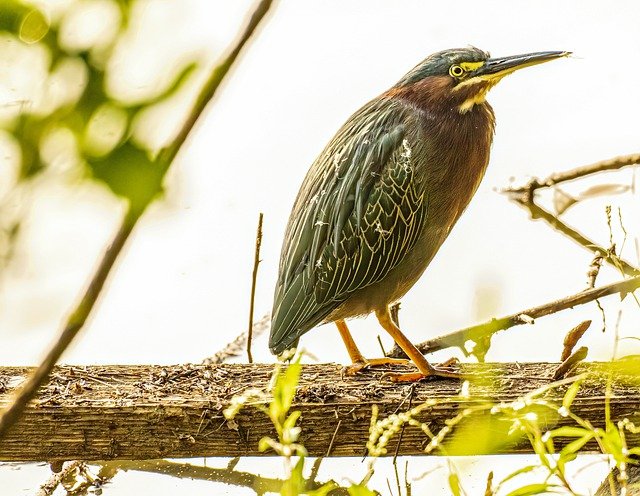
- Size: 40 – 44cm
- Weight: 230 – 250 grams
- Wingspan: 54 – 58cm
You’ll find green herons residing in Kansas throughout the spring and summer breeding months.
These heron’s are recognised by their darker green back and wings, maroon chest and neck, with yellow legs and a relatively long and pointy black beak. Females on the other hand are mostly brown and gray in color.
Green herons tend to spend the majority of their time around wetlands like lakes, ponds, marshes, swamps, streamsides and rivers.
As for what they consume, it includes a variety of different sources such as small fish like minnows, sunfishes, gizzard shads, crustaceans, aquatic insects, frogs, tadpoles, grasshoppers, snakes, earthworms, snails and other smaller rodents.
Green herons don’t have the longest of lifespans for a bird of their size, with the maximum known life expectancy said to be around 8 years.
Amhil Khan, a dedicated nature enthusiast and the founder of BirdsOfTheWild.com, is a passionate advocate for the captivating world of avian wonders. With a deep-seated curiosity about the intricate lives of birds, Amhil’s journey began as a fascination and has evolved into a mission to inspire others to appreciate and protect these magnificent creatures.
Amhil’s love for birds led to the creation of Birds of the Wild, a platform where his expertise in ornithology, coupled with his captivating storytelling, provides readers with an immersive and educational experience. Through his lens and words, he captures the essence of birds in their natural habitats, offering a glimpse into their behaviors, migrations, and the ecosystems they inhabit.

